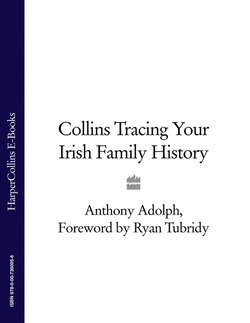Читать книгу Collins Tracing Your Irish Family History - Ryan Tubridy, Anthony Adolph - Страница 40
Early migration
ОглавлениеIn the 4th century AD, western Britain was subject to constant raids from Ireland. The Úi Liatháin, kin to the Eóganacht of Munster, settled in parts of Wales and south-west Britain, whilst the Medieval Irish poem The Expulsion of the Déisi tells how Eochaid Allmuir (‘from over the sea’) of the Dési tribe from Co. Waterford, ‘with his descendants, went over the sea into the land of Dyfed, and his sons and grandsons died there. And from them is [descended] the race of the Crimthann over there.’ Linguistic and archaeological evidence in Dyfed supports this, and the old Welsh pedigrees proudly trace the kings of Dyfed and Brycheiniog back to Aed Brosc, son of Corath, son of this Eochaid of the Dési. The ultimate descendant of the Dyfed dynasty, Ellen ferch Llywarch in the 10th century, married Hywel Dda, King of Deheubarth, Gwynedd and Powys, forebear of virtually everyone with Welsh princely blood in their veins.
The 13th-century English surnames Yreys, Irlond and Iryssh denote people from Ireland, but these may have been returning Cambro-Norman settlers, not native Gaels. This probably applies also to the MacWilliams, traders of Bristol who bought a landed estate at Stambourne, Essex, who are thought to be from the MacWilliam Oughter branch of the Burkes of Connacht. We know Irish beggars had become a problem by Tudor times, for an Act of 1572 was framed to send them home. Later, besides the army, Irishmen were prominent in the navy, and many an Irish sailor found home in the squalid slums of 18th-century St Giles’s, London.
